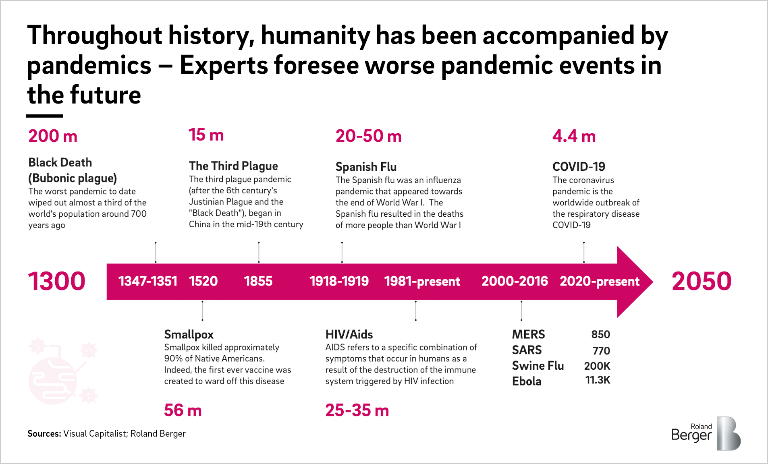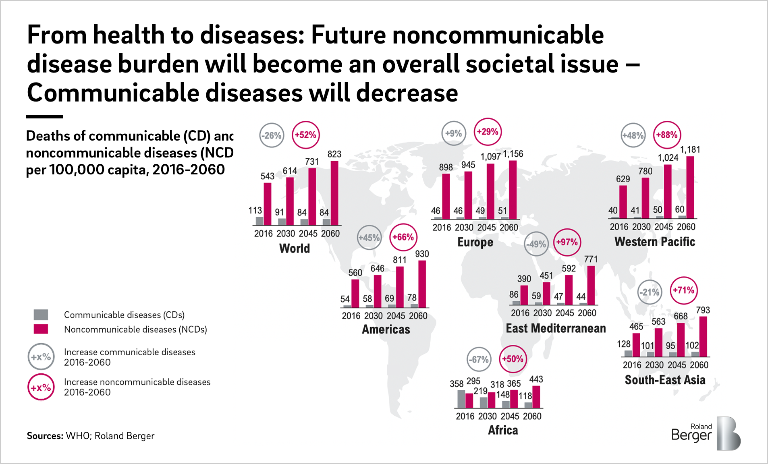In the years to 2050 and across all regions, cost- and care-intensive illnesses such as dementia and diabetes will widen their position amongst the top 5 causes of NCD deaths – behind cardiovascular diseases, cancers, and respiratory diseases. Judging by the risk factors of this group of diseases, a vast share is modifiable and even preventable. To get in front of treatments, prevention and self-care (supported by smart devices such as wearables) will increasingly play a part in our future concept of health: The goal is the increasing of our healthspan, not just of our lifespan.
In the future, treatment of diseases will be increasingly technology-driven and -supported, which already can be seen from eHealth applications to R&D breakthroughs during the COVID-19 pandemic. Novel gene and cell therapies open new therapeutic approaches for widespread diseases with long-lasting effects. The rise of medtech applications, the utilization of AI and machine learning across numerous fields of medicine, as well as the increasing importance of telehealth, all accelerate the fact that future concepts of health will become more predictive and more preventative in nature.
Caregiving: An aging society and its increasing need for care
Caregiving can take many forms but at its core it is always concerned with the assistance of activities of daily living of a person in need. Care support systems and care resource allocation vary considerably around the world. Where data is available, it becomes clear that the provision of care at home by a family member, usually untrained and unpaid, is the cornerstone of caregiving worldwide, placing a considerable burden on the economy as well as the individual.
Beyond developed, mostly Western countries, long-term care (LTC) support systems are at best patchy with care resource allocation equaling to only 1-3% share of GDP. Long-term care trends across many countries display a shift from care in institutions to at-home care: The aim is to achieve care system sustainability by containing cost-intensive institutional LTC infrastructure. The LTC workforce in Europe is predominantly female (81%) – a gender split that has barely shifted over the past decade.
![{[downloads[language].preview]}](https://www.rolandberger.com/publications/publication_image/rb_405_trend_compendium_health_trend_2_cover_download_preview.png)






![Additional LTC workers needed by 2040 [% of 2016 workforce]](https://img.rolandberger.com/content_assets/content_images/captions/405_roland_berger_trend_compendium_deep_dive_trend_2_gt_3__image_caption_none.png)







